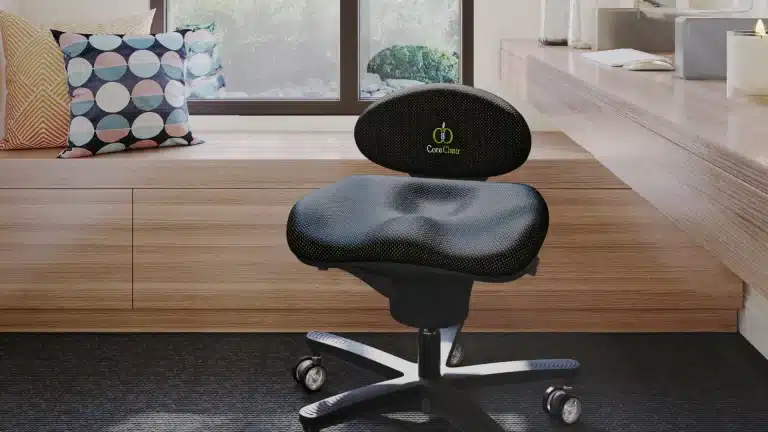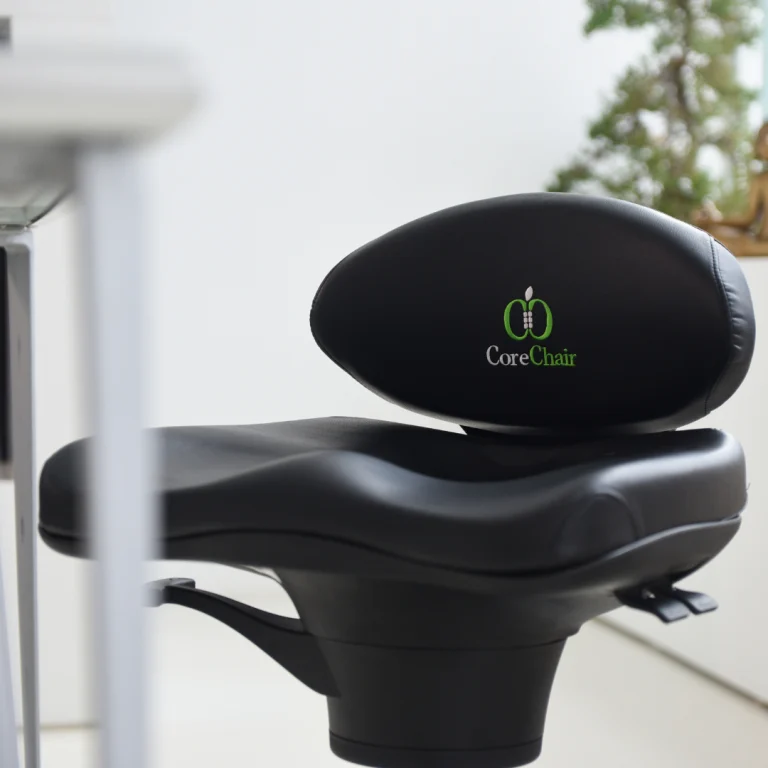When we consider what an office chair should look like and from that what it is intended to achieve, we often think about a relatively flat seat, a tall back and arm rests.
Obviously, our primary objective is to be comfortable and one of the major complaints about office chairs is back pain, so a tall back makes some sense.
In fact many professional ergonomists as well as physiotherapists, agree with this need and this is generally the first design feature that they recommend. Back supportive chair.

The common current day believe is that the back should be tall and adjusted on a slight recline to allow the entire spine to make contact and thereby reduce the gravitational forces that want to make it collapse.
This type of back supportive chair may reduce some of the effects of gravity but at what cost.
One common observation of this approach to the design of a back supportive chair is that it causes the user to elevate their arms in an attempt to reach their work station, mouse or keyboard.
When the user in this case raises their arms, they begin to engage the musculature of their upper back, shoulders and neck.
Imagine carrying a 10 pound bag of groceries home from the store. When you begin the journey, the resistance is insignificant. As the journey continues and these muscles that are used to carry this load begin to fatigue, the distress is very noticeable and eventually painful.
In the case of sitting with a tall and slightly reclined back supportive chair, the user over engages these muscles and then becomes dependent on arm rests to add further support to the arms.
In a properly designed low back chair, the pelvis is stabilized.
In the case of the CoreChair, the pelvis is further stabilized baby way of a sculpted seat so that the pelvis is stabilized on the sit surface at the point of your sit bones and at the top of the back of your pelvis.
When the pelvis is positioned vertically and the user assumes a more open hip angle, where their hips are slightly higher than their knees, the ascending spine assumes an upright balanced position that is much less dependant on additional supports to maintain.
This type of back supportive chair counters the effects of gravity by placing the entire pelvis in greater extension enhancing the natural curves of the ascending spine, similar to standing. With this balance in play, gravity acts down through the spine in the manner in which it was designed.
Furthermore this position allows the user to experience greater natural mobility of their spine in extension, flexion and rotation.
It is important to keep in mind that while it seems logical to provide extra support to counter gravity and its effects, this extra support minimizes the demand on your postural stabilizing muscles. Overtime these muscles weaken or atrophy and other problems may begin to occur. Problems that may be triggered by other activities of daily living and the same problems that become exacerbated baby sitting in a poor posture for long hours every day.
So when you are considering a back supportive chair begin your search with a chair that incorporates excellent pelvic support and positioning. Any additional supports should only be considered in very extreme cases for fear of creating more problems down the road.
Check out the unique back support features of CoreChair to ensure that you not only introduce the optimal back supportive chair but add quality to your other activities of daily living.





